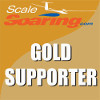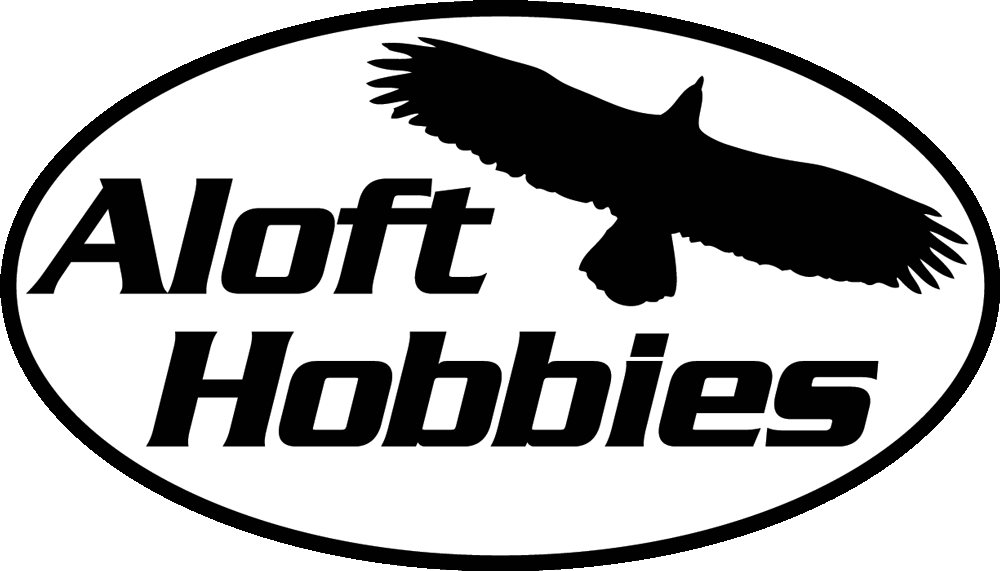I have received the first shipment of the latest 7-meter ChocoFly ASW-17S GPS Racers, This model is the 2019 World Champion model in GPS Triangle Racing, and the winningest model on the Euro Tour in 2018/2019. It is known for it's combination of ease-of-flying, outstanding thermal performance, and ability to go fast. This is intended for the 1:3 Scale and SLS GPS triangle classes, and is based on the 21m ASW-17S.
These are fully-molded, mostly Carbon models, white gel-coated, canopy mounted with release mechanism, removable plastic tray, instrument panel, fully hinged surfaces, retract with brake installed, separately-molded doors hinged and torsion spring-loaded, separate wing and elevator servo covers color-matched to contrasting underside color (Red or Anthracite); removable Rudder/Fin assembly means 92-inch fuselage for transport. Wing is 4-section, 8 servos (2 ailerons, 2 flaps, no spoilers), elevator 2-servos, rudder servo installs in the fin base above the tailwheel. Wing and fuselage bags included.
Models have Dark Grey or Red flying surface undersides. Removable Rudder/Fin assembly means 92-inch fuselage for transport.
Options available: full set of flying surface IDS frames/links/horns for ChocoMotion/MKS/KST recommended servos; full set of ChocoMotion FOX servos (equal to KST/MKS) 10% off with model; Torcman or Leomotion FES systems with removable white propeller; Schambeck belly mount tow release (fits under FES system).
Link to manufacturer website and photos: https://www.chocofly.com/asw/
An example of a build in photos: https://www.cmsmodell.ch/gallery-mod...-17-fes-7-00m/
The wing is molded with 160g and 120g Carbon, Herex and spreadtow in the Carbon D-box. The fuselage is molded with 160g Carbon from the wing mounting area to the tail, and fiberglass nose for radio compatibility. Flying weight is 13.5kg to 20kg (max GPS wing loading allowed) depending on equipment. Full setup data is available.
These models are high-end, high-finish, high-performance beauties, so no bargain on price - they are $6250, full bags included. Set of 10 IDS kits $345. FES systems from $525. Schambeck self-contained belly mount tow release (with servo) $125. All in stock in California. I have a wooden shipping box available too.
Contact me for specifics at: ohmktg413@gmail.com
Bruce DeVisser
Rosenthal Models USA
+1-408-921-1900 voice/text





These are fully-molded, mostly Carbon models, white gel-coated, canopy mounted with release mechanism, removable plastic tray, instrument panel, fully hinged surfaces, retract with brake installed, separately-molded doors hinged and torsion spring-loaded, separate wing and elevator servo covers color-matched to contrasting underside color (Red or Anthracite); removable Rudder/Fin assembly means 92-inch fuselage for transport. Wing is 4-section, 8 servos (2 ailerons, 2 flaps, no spoilers), elevator 2-servos, rudder servo installs in the fin base above the tailwheel. Wing and fuselage bags included.
Models have Dark Grey or Red flying surface undersides. Removable Rudder/Fin assembly means 92-inch fuselage for transport.
Options available: full set of flying surface IDS frames/links/horns for ChocoMotion/MKS/KST recommended servos; full set of ChocoMotion FOX servos (equal to KST/MKS) 10% off with model; Torcman or Leomotion FES systems with removable white propeller; Schambeck belly mount tow release (fits under FES system).
Link to manufacturer website and photos: https://www.chocofly.com/asw/
An example of a build in photos: https://www.cmsmodell.ch/gallery-mod...-17-fes-7-00m/
The wing is molded with 160g and 120g Carbon, Herex and spreadtow in the Carbon D-box. The fuselage is molded with 160g Carbon from the wing mounting area to the tail, and fiberglass nose for radio compatibility. Flying weight is 13.5kg to 20kg (max GPS wing loading allowed) depending on equipment. Full setup data is available.
These models are high-end, high-finish, high-performance beauties, so no bargain on price - they are $6250, full bags included. Set of 10 IDS kits $345. FES systems from $525. Schambeck self-contained belly mount tow release (with servo) $125. All in stock in California. I have a wooden shipping box available too.
Contact me for specifics at: ohmktg413@gmail.com
Bruce DeVisser
Rosenthal Models USA
+1-408-921-1900 voice/text




Comment